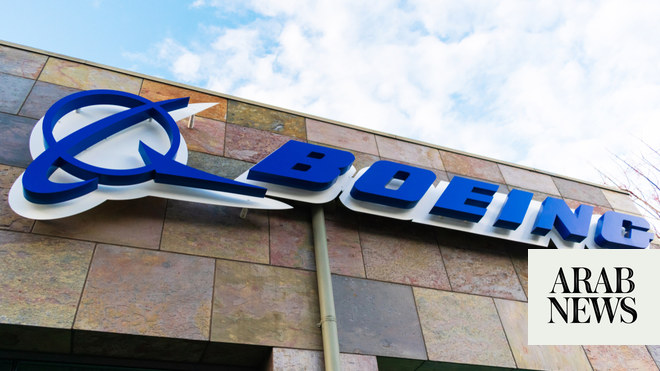
The US plane-maker predicts air traffic back to pre-virus levels within 3 years
The company’s latest market outlook forecasted the dip while also predicting global air traffic to rapidly return to pre-virus levels within the next three years
DUBAI: The impact of the coronavirus disease (COVID-19) pandemic is expected to result in only a 6 percent decrease in demand for new aircraft in the Middle East over the next two decades, according to US plane-maker Boeing.
The company’s latest market outlook forecasted the dip while also predicting global air traffic to rapidly return to pre-virus levels within the next three years.
The Seattle-based aviation giant expects that 2,945 new airplanes, valued at $685 billion, will be needed in the Middle East over the next 20 years, representing average growth of around 4.3 percent per year. This compares to a forecast of 3,130 new aircraft estimated in Boeing’s 2019 outlook, representing a decrease of 185 aircraft, or 6 percent.
During a virtual press conference on Wednesday, Darren Hulst, Boeing’s vice president of commercial marketing, said: “Yes, I say we are only seeing a total 20-year impact of 6 percent.
“In the near-term there is a much more significant impact, the next two years will be extremely challenging for the industry as a whole. Once the market turns around and recovery takes hold it will be remarkably rapid in terms of the growth and we will see the resilience come through again,” he added.
Boeing’s 2020 outlook will result in the total number of jets in the region growing to 3,500 by 2039, from its current total of 1,510.
As a result, Boeing’s 2020 Pilot and Technician Outlook forecasts that the Middle East will require 223,000 new aviation personnel over the same period, including 58,000 pilots, 59,000 technicians, and 106,000 cabin crew members.
This is despite many of the region’s biggest carriers laying off thousands of staff during the height of the COVID-19 outbreak this summer.
The plane manufacturer predicts that the impact of the pandemic on aircraft demand in the Middle East will be triple the global average. In 2019, it estimated demand for 44,040 aircraft by global airlines over the next two decades, while this has been reduced to 43,110 as part of this year’s outlook, a difference of 2 percent.
The long-term impact on aircraft demand will be determined by how quickly the industry recovers in the coming years.
The International Air Transport Association (IATA) in October forecast that full-year 2020 passenger numbers to, from, and within the Middle East will reach only 30 percent of 2019 levels, rising to 45 percent in 2021, with a full 100 percent recovery unlikely until late 2024.
Looking at the global picture, Boeing was slightly more optimistic.
“We see about a three-year recovery, in terms of global air traffic, today back to pre-virus or 2019 levels. That means late 2023/early 24. I think one thing aviation has proven is that you can’t hold it down as it is such a fundamental piece of the global economy,” Hulst said.
In May, senior executives from Dubai’s Emirates airline and Abu Dhabi’s Etihad Airways, two of the biggest airlines in the region, also said they did not see passenger demand returning to pre-COVID-19 levels until at least 2023. In the last week, both airlines have revealed the extent to which the pandemic has impacted their financial performance and future outlooks.
The parent company for Emirates airline announced a half-year net loss of 14.1 billion Emirati dirhams ($3.8 billion), as revenue fell 74 percent. It was the Dubai government-owned company’s first ever reported loss in its history.
At the same time, Etihad Airways reported an operating loss of $758 million for the first half of 2020 and announced it plans to change its long-term strategy and transform the airline into a “mid-size, full-service” carrier with a “leaner, flatter, and scale-able” structure.
The rolling out of a COVID-19 vaccine is also likely to help escalate the recovery, Saj Ahmad, chief analyst at London-based StrategicAero Research, told Arab News.
“It will likely take until 2022 before billions of people have been inoculated, suggesting that a recovery will take another couple of years. The doubling of the regional fleet to 3,500 planes underlines not only the long-term strength for demand, but also indicates the desire for airlines to replace and expand existing inventory,” he said.












